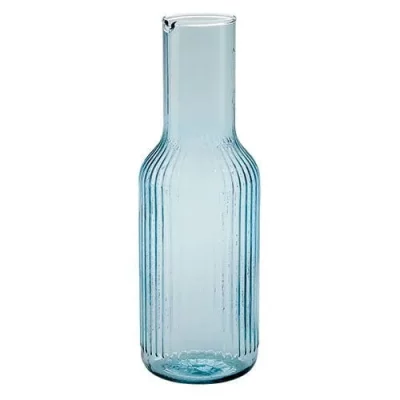Decanters
Decanters are a real statement item ideal for serving a variety of wines to the table in a dramatic and bold way.
Showing all 4 results
What Is A Decanter Used For?
A Decanter is a container, usually made of glass or crystal, used for serving and aerating wine or other alcoholic beverages.
It usually has a wide base and a narrow neck, and its shape helps separate sediment from the liquid and exposes the drink to oxygen to enhance its flavour and aroma.
Decanters are commonly used to serve wine, especially red wines, where sediment can build up over time.
In the hotel and restaurant sector, Decanters fulfill various functions:
Aeration: Decanting brings the wine into contact with air, releasing its aromas and flavours. This process is particularly beneficial for young, tannic red wines as it helps to soften their texture and flavour.
Removal of sediment: Older red wines, especially those that have been aged in the bottle, can develop sediment build-up over time. Decanting separates these sediments and provides a clearer and more attractive presentation when served.
Presentation: Decanters are often used to enhance the presentation of wine in the dining room. Decanting at the table can add elegance to the service.
Temperature Control: Decanters can be pre-chilled or heated to maintain the ideal serving temperature for the wine being served. This is especially important for white wines and some red wines that require special temperature conditions.
Oxygenation of other spirits: Although wine is often decanted, some spirits, such as some aged whiskeys or brandies, can also benefit from aeration and subtle interaction with oxygen.
In summary, the Decanter is a versatile tool in the hotel and restaurant sector, mainly used for serving and improving the quality of wine.
It contributes to the overall experience of enjoying a fine beverage by combining practical functions such as sediment removal with aesthetic considerations in presentation.




